Search results for 'The And'
-
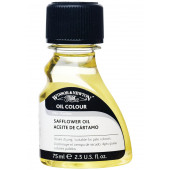
Winsor & Newton Safflower Oil 75 ml
£9.20From the Winsor & Newton website: A slow drying oil which improves flow, increases gloss and transparency. Particularly suitable for use with whites and pale colours.
Learn More -
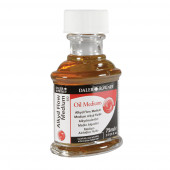
Daler-Rowney Alkyd Flow Oil Medium
Starting at: £9.20
Slightly thinner than Alkyd Gel, Daler Rowney Alkyd Flow Medium increases the transparency and flow of oil colour, allowing paint to be brushed out more smoothly. Reduces drying time. Learn More -
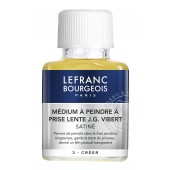
Lefranc Vibert Medium
Starting at: £9.10
LeFranc Bourgeois are a paint manufacturer with a long history of supplying to artists since their beginnings in 1720.
From their website: The slow-drying J.G. Vibert painting medium holds brush marks, creates a painterly satin film and prevents any sinking. It creates a uniform top film and enables artists to rework old colours for long periods of time.
Learn More -
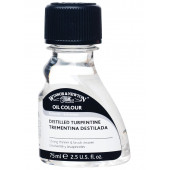
Winsor & Newton Distilled Turpentine
Starting at: £6.85
From the Winsor & Newton website: A fast evaporating, highly refined essential oil with the strongest thinning and brush cleaning power of all Artists' grade solvents. Suitable for removing varnish (including Dammar Varnish).Keep tightly closed and away from light to prevent oxidation. Do not use if it has thickened. Learn More -
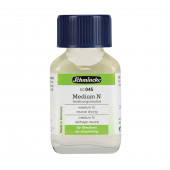
Schmincke Medium N
Starting at: £9.45
This product does not contain turpentine, and is therefore suitable for artists with allergies. A 'neutral', nearly non-yellowing painting and thinning medium for oil colours. Applicable for all painting techniques except for ground motifs on slightly absorbent undergrounds (not “lean” enough). Low impact on drying time. Thinner: Terpin (50023) (max. 30%). Dosage: 10 to max. 20%. Learn More -
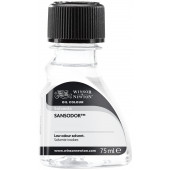
Winsor & Newton Sansodor
Starting at: £6.85
Sansodor is a low-odour solvent which can be used as an alternative to turpentine. It evaporates slowly, increasing the blending time of oil paints, and can be used to clean brushes. Learn More -
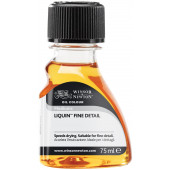
Winsor & Newton Liquin Fine Detail
Starting at: £9.20
From the Winsor & Newton website: The most fluid of the Liquin family of products, this quick drying, gloss medium is ideal for fine details, glazing and blending, or to produce a smooth surface picture. Speeds drying (touch dry in 1-6 days depending on colour and film thickness).Resists yellowing. Not suitable as a varnish or final coat.
Learn More -
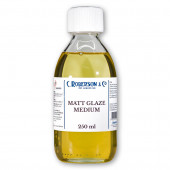
Roberson Matt Glaze Medium
Starting at: £9.80
Mix with tube oils or pigment to improve flow and translucency, resulting in a satin finish. Contains silica driers. May darken if cap is left off bottle; if this happens, replace the lid and leave overnight to restore the colour with no lasting ill effects.
Learn More -
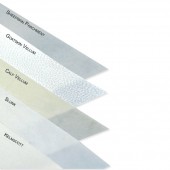
Sheepskin Parchment
Starting at: £11.75
Pale, thin and translucent. Only the flesh side can be used. A light dusting of sandarac powder is usually sufficient to prepare the surface for writing.
Please note: This is a natural product that has been finished and cut by hand. As such, there may be slight variations in the surface and size of each piece.
Learn More -
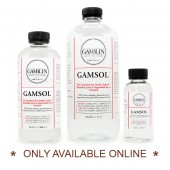
Gamblin Gamsol Mineral Sprit
Starting at: £9.30
Gamsol is an odourless mineral spirit created by the American company Gamblin. They describe it as "the safest solvent that allows oil painters to utilize all traditional painting techniques without compromise."
Please see below for Gamsol's primary applications.
Learn More -
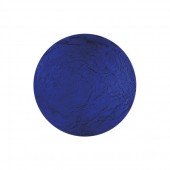
Blue Verditer Pigment
Starting at: £7.50
** While stocks last ** Blue Verditer, sometimes referred to as Bremen Blue, is a synthetic form of Azurite, or copper-calcium carbonate. It has a weak tinting strength and is sligtly transparent. It works best in water-based binders, as the acidity of linseed oil can cause discolouration.
Learn More
Larger sizes available on request -
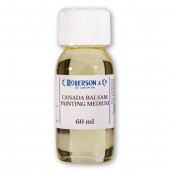
Roberson Canada Balsam Medium
Starting at: £39.10
A high quality painting medium which will produce a deep glow, made from Canada Balsam and Turpentine. Especially effective with transparent oil colours, it is recommended as the medium of choice in the final stages of an oil painting. Learn More -
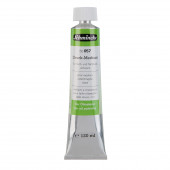
Schmincke Print Medium Black 120 ml
£15.95For relief and intaglio printmaking with black oil paints. Learn More -
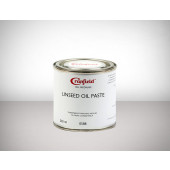
Cranfield (Spectrum) Linseed Oil Paste
Starting at: £24.65
Call to Order
From the Cranfield website:
An almost transparent painting medium based on refined linseed oil and alumina. It is similar in consistency to Studio Oil Colours in tubes. It does not promote quick drying and may be used to extend oil colours. It can be used in large ratios where the desired effect is to increase yellowing and darkening of pale colours. It will not increase gloss.
Learn More -
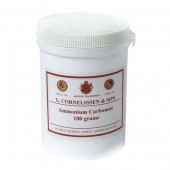
Ammonium Carbonate
Starting at: £9.70
Ammonium Carbonate is a highly Alkaline substance that reacts with the lactic acid present in casein to form a robust binder for tempera paints. It should only be used in a well-ventilated area, please see below for the Material Safety Data Sheet. Learn More -
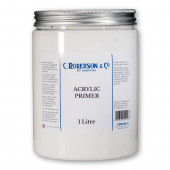
Roberson Acrylic Primers
Starting at: £22.10
Contains acrylic resin and titanium dioxide. Smooth white surface. 1 litre will cover approximately 14 square metres depending on the porsity of the surface. Learn More -
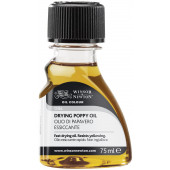
Winsor & Newton Drying Poppy Oil
Starting at: £9.20
From the Winsor & Newton website: A fast-drying, pale oil made from poppy seeds which is well suited for whites and pale colours. Reduces consistency. Increases gloss & transparency. Resists yellowing.
Learn More -
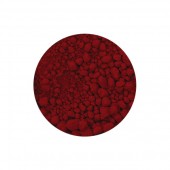
Carmine Red Genuine Pigment
Starting at: £10.00
NR4
Carmine has been used as a dye and pigment since antiquity. Originally derived from the kermes insect, it was replaced by cochineal following the discovery of the Americas. It has a good tinting strength and is very transparent, although it is fugitive to light.
Larger quantities are available by request.
Learn More -
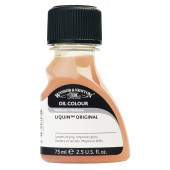
Winsor & Newton Liquin Original
Starting at: £9.20
From the Winsor & Newton website: This reliable favourite is a general purpose semi gloss medium which speeds drying, improves flow and reduces brush stroke retention. Halves the drying time of conventional oil colour (touch dry in 1-6 days depending on colour and film thickness). Resists yellowing. Not suitable as a varnish or final coat. Learn More -
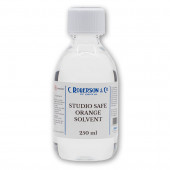
Roberson Studio Safe Solvent
Starting at: £10.90
A highly efficient and safer solvent for oil paint. Studio Safe is non-aromatic and non-flammable and has a pleasant orange smell. Use for brush cleaning and the thinning of paint and as an alternative to traditional turpentine and white spirit.
Learn More -
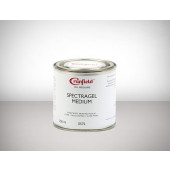
Cranfield (Spectrum) Spectragel Medium
Starting at: £16.50
From the Cranfield website:
This is a thixotropic alkyd medium designed to mix with oil colours, retaining the body of the paint.
Spectragel is a gloss medium and is quick drying. It is a clear medium based on a synthetic resin that improves the weather resistance of oil colours; ideal for glazing and extending colours while retaining gloss and structure of paint.
Matt Spectragel is a quick drying, clear, weather-resistant medium based on synthetic resin. Ideal for extending colours, Matt Spectragel Medium will retain structure and dry to a matt finish.
Learn More -
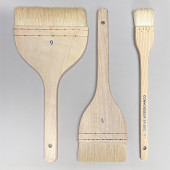
Hake Brushes
Starting at: £5.00
Hake brushes are primarily used in watercolour painting for creating broad washes and applying glazes due to their excellent water-holding capacity and soft bristles. Learn More -
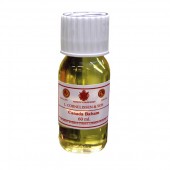
Cornelissen Canada Balsam
Starting at: £39.10
Canada Balsam is an oleoresin, meaning that it is a mixture of essential oils and resin. It comes from the fir tree Abies balsamea, native to Canada and the eastern states of North America. It is notable for its pale colour, clarity and gloss, making it a useful ingredient in recipes for oil-painting mediums.
Learn More -
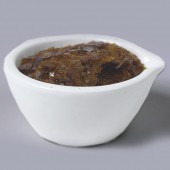
Lemon Shellac
Starting at: £8.20
Shellac is a natural resin that is deposited by the female lac insect on the branches of trees in India and Thailand. It is soluble with alcohol, but not with mineral spirits or turpentine. It forms a tough yet flexible film, with many applications. It is suitable as a top coat for gilding when applied thinly, a sealant for porous surfaces, an isolating layer for tempera paintings, a base for pigmented inks, a protective layer for collograph plates, and a warm varnish for wooden floors and furniture. As it is prone to darkening with age, it is not recommended as a varnish for oils, and its solubility can reduce over time. There are various grades of shellac. When mixed with alcohol, it may initially form a cloudy mixture, due to traces of wax in the shellac, but this should become clear once it has dried. The highest grades of shellac are Clear Dewaxed Shellac, which has been de-coloured using the carbon filtering method, Lemon Shellac, and Orange Shellac, which are pale in colour. Button Shellac is less refined and therefore produces a reddish varnish. It was, in fact, widely used as a red dye before synthetic dyes became available. Learn More -
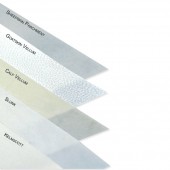
Slunk
Starting at: £16.75
Skin of young calves. Very fine and translucent. Requires little or no preparation before writing.
Please note: This is a natural product that has been finished and cut by hand. As such, there may be slight variations in the surface and size of each piece.
Learn More -
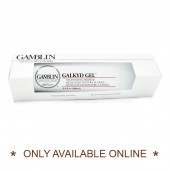
Gamblin Galkyd Gel "G Gel" 150ml
£19.40Galkyd "G" Gel is produced by Gamblin. They say:
"Galkyd Gel is a stiffer gel compared to Neo Megilp that holds thicker, sharper brushmarks and dries more quickly. Galkyd Gel increases transparency of oil colours and creates impasto."
Learn More -
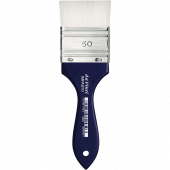
da Vinci Series 5025 Impasto Mottler
Starting at: £10.50
Extra strong white synthetic bristles, short lenght short blue polished handle, rust proof steel ferrule. Learn More -
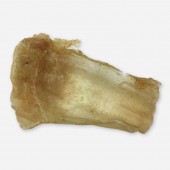
Isinglass
Starting at: £30.10
Isinglass is derived from the dried swim bladders of fish, with Salianski Isinglass being the highest grade available. In the Russian Icon tradition, it commonly provided the glue component in gesso recipes, and was sometimes mixed with pigment to make tempera paints, due to its high binding strength. It can be used to make a pale, clear glue, which is less prone to darkening than other animal glues, and which is particularly flexible, making it a useful material for repairing textiles. Learn More -
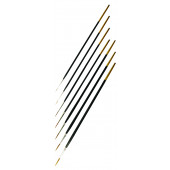
Pro Arte Series 103 Rigger
Starting at: £3.70
Long haired synthetic brush with good colour holding capacity and spring. Very fine point. Learn More -
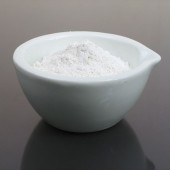
Plaster of Paris
Starting at: £5.50
For moulding when mixed with the same volume of water. Sets quickly and will not shrink. Learn More





